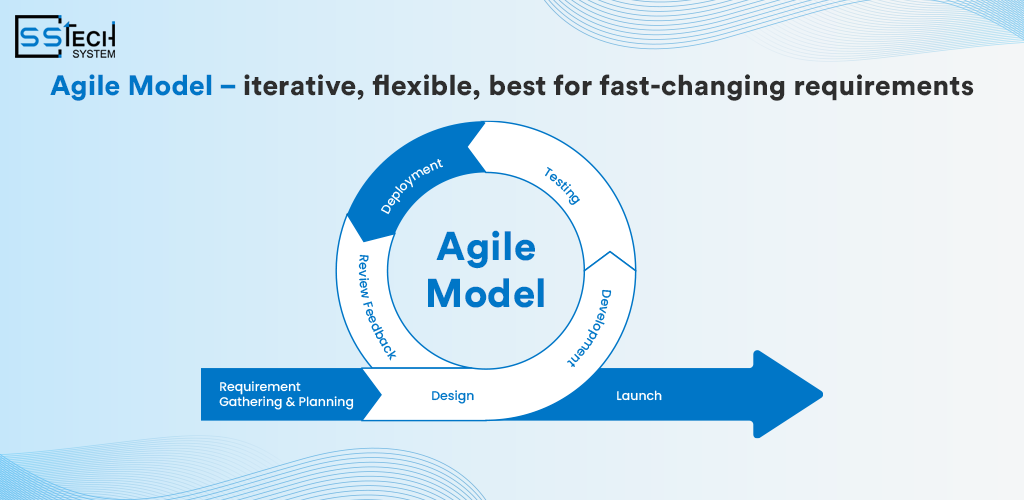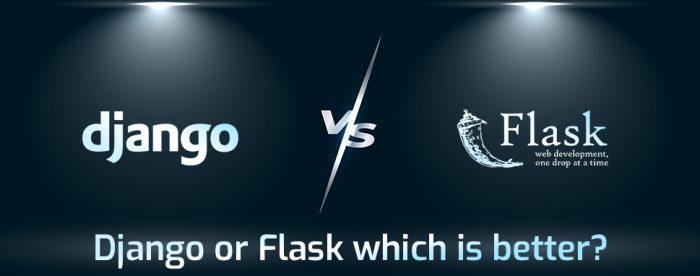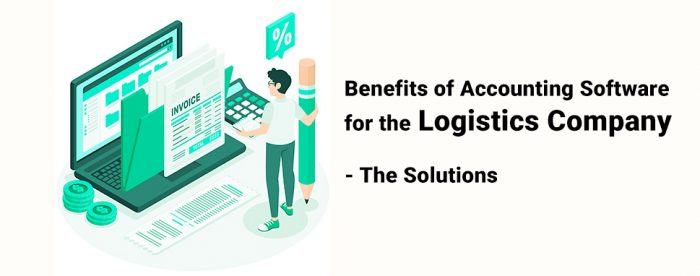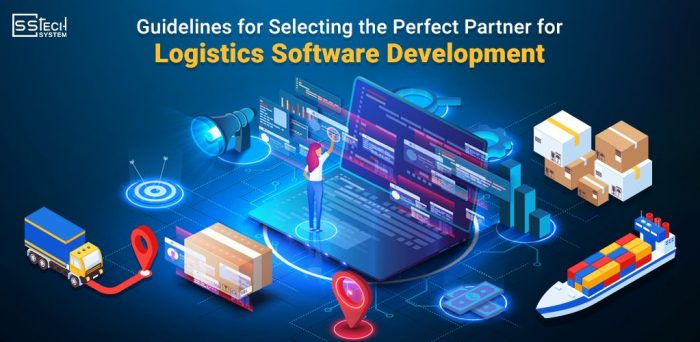Software development is no longer an option but essential for organizations aiming to stay competitive. Despite huge investments and technological progress, over 50% of software fails to meet their goals, and nearly 70% of organizations face one project failure every year. Think of it, why? Lack of project understanding, requirements, poor planning, and a structured process.
However, SDLC provides a clear and aligned strategy to overcome these challenges, ensuring that every software development service is executed with precision, efficiency, and quality. From requirement gathering, analysis, to deployment, it ensures it is executed with precision and transparency that drives measurable outcomes.
In this blog, we will explore what is software development life cycle all about, its importance, and future trends.
What is Software Development Life Cycle (SDLC)?
The software development life cycle (SDLC) is a structured methodology that defines the stages and tasks involved in developing software. It enables developers to build cost-effective and high-quality software applications. The development process includes various stages such as planning, deployment, testing, and release of software efficiently.
The SDLC breaks down the development process into independent phases. Each phase has a clear understanding of the project scope and deliverables that help the development team to create software that meets the stakeholder needs, project requirements, and customer expectations.
Following the well-defined SDLC reduces the project failure by up to 35% whether you are developing a new application or upgrading an existing one. It acts as a backbone for a successful project.
Importance of SDLC in Software Development
According to research, 66% of software projects fail due to a lack of proper planning and a poor understanding of the project requirements. Managing these projects is inherently challenging for companies due to changing requirements, technology upgrades, and cross-functional collaboration.
However, SDLC provides a clear roadmap for the entire software development process. Let’s understand its importance.
-
Minimizes risks and project costs
Identify and fix issues at an early stage, which prevents from expensive rework and budget overruns. It minimizes risks through careful planning and a structured roadmap.
-
Improves the product quality
A structured approach ensures the final product meets the specified requirements and quality standards by identifying and correcting errors during development. It also guarantees that the software is properly functional and secure.
-
Enhances customer satisfaction
The SDLC helps create a systematic approach and ensures that the finished product meets customers’ expectations and requirements, resulting in increased customer satisfaction.
-
Efficient communication and collaboration
It provides a common framework and clear deliverables, which improve communication and collaboration between developers, stakeholders, and clients.
Core Phases of the Software Development Life Cycle
The software development life cycle phase comprises distinct tasks and objectives to build a perfect software application. For different teams, the implementation methodology varies. The process involves various stages, and some common phases are described below.
-
Planning & Requirement Analysis
It is an important phase as it establishes the goals and scope of the project. The development team thoroughly analyzes the project to understand its problem and how the software will interact with other applications and systems.
They collaborate with several stakeholders, such as customers, internal and external experts, and managers, to gather information and create a software requirement specification document.
-
Design
The design phase focuses on defining the project’s architecture, such as outlining the software’s navigation, user interface, database design, and more. It ensures technical and functional specifications are aligned. The engineers then look at how to integrate the new software into the existing infrastructure.
-
Implementation and Development
The third stage of SDLC is the coding phase or development phase. In this phase, the development team starts writing the code of the product based on SDD, SRS, and other guidelines.
These guidelines help developers in selecting the right programming language, technologies, frameworks, libraries etc, and help project managers divide the coding tasks into smaller tasks.
-
Testing
After completion of the tasks, the testing process begins, which includes code, functional, integration, performance, and security testing. The team runs the software to identify bugs, glitches, or errors and fix them. They also conduct performance and compatibility checks to minimize processing lags and hangs and see if it meets customer requirements. The software testing process is carried out through automation and manual methods.
-
Deployment
In the final phase, developers deliver the software to the real environment for users to access. They ensure users understand how to use the software and deploy it smoothly with minimal disruption, allowing them to continue working seamlessly.
The software deployment phase encompasses several tasks such as packaging, environment configuration, and installation.
-
Maintenance
The team fixes bugs, solves customer issues, and manages changes in software. They also monitor overall system performance, security, and user experience. Identifies new ways to improve the existing software.
Tools for Each SDLC Phase
SDLC tools support various stages of the Software Development Life Cycle, enhancing collaboration, automation, and traceability to make the development process more efficient and structured. Below are some of the most widely used tools for each SDLC phase.
-
Planning and Requirement Analysis Tools
It helps in planning, organizing, and tracking tasks. It provides a structured workflow and enables the team to efficiently collaborate and deliver projects on time. These tools also help to gather and manage project requirements and ensure all stakeholders are aligned.
Examples: Jira, Trello, Asana
-
Design Tools
These tools help provide a visual representation of the project, such as interface design and UI/UX prototyping. They are used to create system design, architecture diagrams, and workflows.
Examples: Figma, Sketch, Adobe XD
-
Testing Tools
These tools automate various types of testing processes, such as unit, integration, and performance and ensure software quality is not compromised.
Example: Selenium and Cypress
-
Deployment Tools
Container orchestration platform has changed the way of packing and deploying applications by creating consistent environments right from testing sandbox to production. These tools integrate with CI/CD pipelines to automate the deployment process and reduces errors during releases.
Examples: Docker and Kubernetes
-
Maintenance and Monitoring Tools
Once the software is deployed, the tool helps track application performance, monitor servers, infrastructure observability, and real-time error tracking. It ensures system reliability, uptime, and enhances overall user experience.
Examples: New Relic, Datadog, Prometheus
What are the common SDLC models?
Choosing the right SDLC model is essential and depends on various factors, like, As the project clearly defined or how complex the project is. Is the development team experienced? Understanding these aspects helps stakeholders to select the right model for the project. Each software model has its own strengths and weaknesses, and some of the most popular SDLC methodologies are explained below:
Waterfall Model – a structured and predictable approach
It is a traditional SDLC methodology that follows a linear and sequential approach, where each stage of the development process is completed before the next stage begins. There is minimal involvement of the stakeholders. Some use cases of waterfall methods are:
- Creates a simple yet flexible business app with defined functions
- Build a basic e-commerce website with easy access functionality
- Develop a retail store POS system with business regulations
The model is beneficial for small to mid-sized projects, provides thorough documentation, and clear deliverables. Predicts timeline, costs, and makes management and monitoring easier.
Waterfall model’s rigid nature makes it difficult to implement any changes, leads to project delays, and late testing causes high costs for fixing issues.
V-Shaped Model – focus on testing at each stage
The V-Model, also called the verification and validation model, modifies the waterfall model by adding formal validation and verification at every development stage. In this model, each phase has its own accompanying testing phase. V-shaped models use cases are:
- Creates systems that are safe and critical, like medical tools, etc
- Design high-performance embedded systems
- Develop financial solutions with security and data integrity
It is beneficial for software with stable requirements to conduct frequent testing to eliminate bugs early.
It is not considered for projects with evolving requirements or fast-paced delivery cycles due to its rigidity and resource needs. Its linear structure makes it less flexible.
Agile Model – iterative, flexible, best for fast-changing requirements

Agile model is based on continuous improvement and development cycles, often known as sprints, in which developers regularly make small changes based on the requirements. It allows the development team to identify and address issues early in the process, preventing them from turning into major problems. This approach is especially beneficial for projects where clients are actively involved in regular discussions and progress reviews. Regular sprints ensure continuous delivery and are flexible to adapt to changes.
The model’s iterative nature makes it less predictable for timelines and costs. It can be resource-intensive and without proper management, may lead to scope creep where the project can expand beyond its original plan.
-
Lean Model – enhance efficiency and waste reduction.
It applies manufacturing principles and practices to software development to reduce waste and maximize efficiency at every step of SDLC. Its core principles are value, eliminate waste, quality assurance, knowledge creation, commitment, fast delivery, and improve workflow.
Lean model aims to improve business processes, prioritizes fast feedback loops, and iterative development to ensure faster delivery and better quality with fewer resources.
Iterative Model – repeated cycles for refinement.
The model builds a system through repeated cycles. It is the opposite of the waterfall model, where the initial version of the software is created and can go back over phases and allow changes, growth, and evolves on each iteration. The core principle of the model focuses on breaking down projects into smaller and manageable iterations. Use cases of the iteration model are:
- Build a new social network site with dynamic features
- Create a CMS with an expanding set of features
- Build a complicated e-commerce site with dynamic product features.
This model is ideal for projects with evolving, changing requirements, as changes are cheaper to implement. There is a need for user involvement.
-
Spiral Model – risk-driven approach combining iterative and waterfall
It is a risk-driven software development process and emphasises risk assessment. It focuses on determining objectives, resource and risk analysis, development and testing, and planning for the next iteration
The model’s flexibility enables changes in various stages, and regular customer feedback ensures the software aligns with their needs. It is best used for large and complex projects.
Its complex nature makes it difficult to manage risk analysis, and repeated iterations can increase cost, and iterative cycles and reviews extend the project timeline.
Big Bang Model – minimal planning, good for small and simple projects.
It is an informal and unstructured form of software development, where development starts without a clear plan or objective of what their final product should look like. The big bang model involves high risk and high cost, but it works well for small projects with clear parameters that don’t require detailed planning or management.
Comparison of different SDLC Methodologies
Each SDLC model has its own set of advantages and disadvantages, and it may be appropriate for different projects. Here’s a comparison table of key factors for major SDLC methodologies:
| Factors | Waterfall Model | Agile Model | Iterative Model | Spiral Model | V-Model | Lean Model |
|---|---|---|---|---|---|---|
| Approach | Sequential and linear | Incremental and adaptive | Cyclic and repetitive | Risk-driven and iterative | Sequential with testing at each stage | Value-driven and waste-minimizing | Flexibility | Low | High | Moderate | High | Low | High |
| Customer Involvement | Low (mainly at start and end) | High (continuous feedback) | Moderate | High | Low to moderate | High | Risk Management | Minimal | Moderate | Moderate | Strong focus | Moderate | Moderate | Delivery Time | Longer | Shorter (frequent releases) | Moderate | Longer (due to risk analysis) | Longer | Shorter (streamlined process) | Documentation | Heavy | Minimal | Moderate | Detailed | Heavy | Minimal | Cost | High (changes are costly) | Moderate | Moderate | High | High | Low | Best For | Well-defined, stable projects | Dynamic and evolving projects | Large, complex systems | High-risk projects | Safety-critical systems | Startups or fast-paced environments | Disadvantage | Cannot move back to a previous stage once it’s done. Doesn’t handle changes well. | Can be difficult to estimate time and cost. Requires customer and team engagement. | Requires careful planning to make sure increments are meaningful. | Can be complex to follow/understand. Needs careful management. | Like Waterfall, it’s inflexible to changes. | – |
Benefits of the software development life cycle
A clear SDLC provides development teams with a standardized structure and repeatable process. It makes it easier to consistently create high-quality software. The benefits of SDLC include:
-
Better project planning and control
SDLC provides a structured framework that helps teams define goals, timelines, and deliverables clearly. It ensures every phase is well planned, monitored, and managed efficiently for smooth execution.
-
Higher software quality
By following systematic stages like requirement analysis, design, testing, and maintenance, SDLC ensures that the final product meets quality standards and user expectations.
-
Reduced risks and costs
Early identification of errors and continuous monitoring throughout the development cycle help minimize project risks and avoid costly rework later in the process.
-
Faster delivery with fewer surprises
Clear processes, regular testing, and continuous feedback minimize delays and uncertainties, resulting in timely and predictable project outcomes.
-
Clear communication between teams and stakeholders.
SDLC establishes defined roles, documentation, and review checkpoints, promoting transparency and collaboration among developers, testers, and clients.
What are the risks of the Software Development Life Cycle?
Risk itself is a broad area, and can impact the development process in various ways. There are various types of risks such as technical risk and project risks. Some of the risks are explained below:
-
Overly rigid processes can slow innovation
When SDLC processes are too strict or inflexible, teams may struggle to adapt to new ideas or changing requirements, limiting creativity and innovation.
-
Wrong model choice – wasted resources
Selecting an unsuitable SDLC model for the project can lead to inefficiencies, cost overruns, and delays, as the chosen framework may not align with project needs or complexity.
-
Poor requirement analysis leads to rework
If the team doesn’t clearly define or analyze project requirements at the start, developers might build features incorrectly, causing repeated revisions, wasted effort, and missed deadlines.
-
Lack of stakeholder involvement may derail progress
Without active participation from clients or key stakeholders, teams risk misaligned goals, unclear priorities, and products that fail to meet user expectations.
How to choose the right SDLC model?
Choosing the right model is crucial as it directly affects the success of the project. Each model has its own set of advantages and disadvantages, and several factors to consider, such as project size, team expertise, risk level, and many more. Let’s explore:
Project size and complexity
Complexity and scalability of a project play a huge role in choosing the model.
- For small-sized projects, waterfall or big bang prototype models work well when there’s minimal planning and quick execution.
- For large and evolving projects, agile or spiral models are feasible in handling the evolving project requirements, frequent changes, and allow flexibility, iteration, and continuous feedback.
- For high-risk or safety-critical projects, spiral or V-shaped models are preferred. They emphasize risk assessment, validation, and rigorous testing at every stage.
Project timeline
The timeline is the most important factor as it dictates the choice of model.
- If your project has fixed timelines, waterfall, and V-model are effective. These models follow a structured approach and provide better planning.
- Agile and DevOps methodologies focus on quick iterations and continuous deployment. They offer flexibility in timelines and can adapt to evolving project priorities.
Budget
Every project is aligned within a budget.
- If your project has a limited budget, then the big bang and prototype model is best suited since they don’t require extensive upfront planning.
- Project with phase-wise investment uses an Agile and iterative model, and allows for funding in stages that reduce financial risk.
- Projects with high budgets and high risk prefer the spiral model as it integrates risk analysis at every phase and ensures issues are addressed early.
Risk tolerance
Different SDLC models offer various levels of risk mitigation
- A project with high uncertainty and risks works best with an agile methodology and a spiral approach that allows risk assessment at each phase and helps reduce unforeseen failure.
- Projects with low risk have clear requirements and are predictable from the beginning; waterfall and V-models work best.
Future trends in Software Development Life Cycle (SDLC)
As technology keeps advancing, software development is undergoing a significant change. The Software Development Life Cycle (SDLC) is becoming more focused, and modern trends are reshaping and emphasizing on automation, security, and ensuring users have a good experience. Here are some key trends shaping the future of SDLC:
-
AI-powered development
Artificial Intelligence is redefining how developers build software. AI-driven tools automate coding, identify bugs quickly, and enhance testing processes. It also reduces manual tasks and gets better quality software in a shorter timeframe. Predictive analytics and intelligent automation help teams make better decisions, making their work easier, and deliver higher-quality software faster.
-
DevSecOps integration
Security is no longer an afterthought; developers integrate it throughout the entire development process. DevSecOps teams actively combine development, security, and operations to continuously monitor applications for vulnerabilities. By addressing security from the beginning, teams can spot potential risks earlier and deploy software that’s both quick and secure.
-
Low-Code and no-code platforms
Low-code and no-code platforms are empowering non-developers to create applications through visual interfaces. These tools reduce development time, lower costs, and enable businesses to respond quickly to changing market needs. They’re especially useful for prototyping, automating workflows, and building internal tools.
-
Agile and DevOps hybrid models
The future of SDLC lies in combining Agile and DevOps. This hybrid model combines Agile’s flexibility with DevOps’ focus on automation and continuous delivery. This approach improves collaboration, speeds up release cycles, and aligns the development process more closely with business goals.
-
IoT & Edge computing considerations
As the Internet of Things (IoT) and edge computing continue to expand, the software development life cycle must adapt to handle a distributed environment. Developers need to focus on real-time data handling, device connectivity, scalability, and ensure applications connect effectively across various devices.
-
Greater focus on user-centric design
A strong focus on user-centric design is becoming essential. Modern software development emphasizes creating software that is user-friendly, accessible, and provides personalized experiences. Continuous user feedback and data-driven design decisions ensure software that truly meets customer expectations.
Conclusion:
SDLC models define how teams build software, directly impacting quality, timelines, budgets, and how effectively the final product meets stakeholder expectations. Trends like AI automation and integration of security through DevSecOps, it reflect a shift toward smarter, faster, and more user-centered development.
As organizations embrace these innovations, they will define the future of SDLC with agility, efficiency, and continuous improvement, ensuring that software meets functional goals and delivers exceptional user experiences.
If you are looking for a reliable software development company, it is the right time to connect with our experts. They will help turn your ideas into a top-quality software product by employing the right SDLC methodologies for you.
Siraj Timbaliya
Chief Executive Officer (CEO)
With over 14 years of experience, he brings extensive expertise and a proven record of excellence across project management, strategic planning, operations, and human resources.










